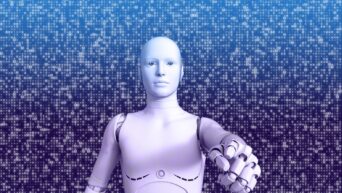
Credit: Pexels
Imagine a world where technology could not only recognize your face but also claim to understand how you’re feeling. That’s the premise of Google’s latest AI innovation, PaliGemma 2, a family of models that can analyze images, generate captions, and even identify emotions. But as intriguing as it sounds, this advancement has experts raising red flags.
What Is PaliGemma 2?
Unveiled recently, Google’s PaliGemma 2 models are designed to interpret and describe scenes in photographs. Unlike typical AI models that focus solely on object detection, PaliGemma 2 goes a step further by identifying actions, emotions, and even broader narratives within the imagery. The potential? Enhanced user experiences in photography, storytelling, and interactive platforms. The challenge? Navigating the ethical minefield that comes with such technology.
Introducing PaliGemma 2, the tunable vision-language model that brings the power of sight to Gemma 2 👁🗣 → https://t.co/xn9lAPdWih pic.twitter.com/D7Ii5oJ1T7
— Google for Developers (@googledevs) December 5, 2024
Emotion detection is not a feature that works “out of the box.” It requires fine-tuning and customization, making it a deliberate choice for those who deploy it. Despite Google’s claims of rigorous testing, the idea of AI reading emotions has drawn criticism, especially given the technology’s shaky scientific foundations and history of biases.
The Problem with Emotion Detection
Welcome PaliGemma 2! 🤗
Google released PaliGemma 2, best vision language model family that comes in various sizes: 3B, 10B, 28B, based on Gemma 2 and SigLIP, comes with transformers support day-0 🎁
Saying this model is amazing would be an understatement, keep reading ✨ pic.twitter.com/5ZA3myy7An
— merve (@mervenoyann) December 5, 2024
The science of identifying emotions through facial expressions remains controversial. Early research by psychologist Paul Ekman suggested humans universally express six basic emotions—joy, sadness, anger, fear, surprise, and disgust. However, more recent studies challenge this, arguing that emotions are complex and culturally influenced, making them nearly impossible to decode accurately from faces alone.
Experts like Sandra Wachter from the Oxford Internet Institute are particularly skeptical. Comparing AI’s emotion detection to “asking a Magic 8 Ball for advice,” she warns against over-reliance on a technology that simplifies human emotions into rigid categories.
The risk of bias is another critical concern. Studies have shown that facial recognition systems often misinterpret expressions based on race, assigning more negative emotions to Black faces than white ones. This raises fears that emotion-detecting AI could perpetuate discrimination in fields like law enforcement, hiring, or education.
The Ethical Debate
Google claims it conducted “extensive testing” to mitigate biases, including evaluations using datasets like FairFace, which is designed to reduce racial bias. However, critics argue that such measures are insufficient. The limited scope of these benchmarks and the lack of transparency about Google’s testing methods leave many questions unanswered.
Heidy Khlaaf, chief AI scientist at the AI Now Institute, emphasizes that interpreting emotions is inherently subjective, deeply tied to personal and cultural contexts. “Research shows we cannot infer emotions from facial features alone,” she explains, underscoring the pseudoscientific nature of many emotion-detection claims.
Potential Risks and Real-World Implications
The misuse of emotion-detecting AI is a major concern. In the wrong hands, it could lead to significant harm, such as biased decision-making in high-stakes scenarios like hiring, loan approvals, or even border security. Regulators in Europe have already begun addressing these risks. The EU’s AI Act prohibits the use of emotion detectors in schools and workplaces but stops short of banning them in law enforcement.
Mike Cook, an AI researcher, warns of the broader implications: “If this so-called emotional identification is built on pseudoscientific presumptions, it could falsely discriminate against marginalized groups.”
What’s Next?
For Google, the release of PaliGemma 2 represents a technological leap but also a potential ethical misstep. The company defends its testing processes and commitment to responsible AI development, but experts like Wachter call for more robust safeguards. “Innovation must consider its consequences from day one,” she asserts.
As AI continues to evolve, the debate around emotion detection serves as a reminder of the fine line between innovation and ethical responsibility. While the technology might open doors to exciting possibilities, it also raises a crucial question: Are we ready for AI to read our emotions, and at what cost?Google’s PaliGemma 2 is undeniably impressive, but its ability to “identify” emotions reveals more about our fascination with AI than its actual capabilities. As the conversation around ethical AI intensifies, one thing is clear: technology must respect the complexities of humanity, not reduce them to a simplistic algorithm.
































